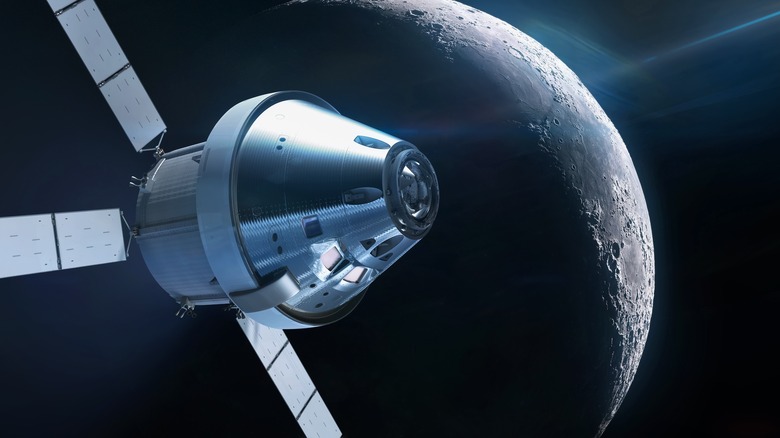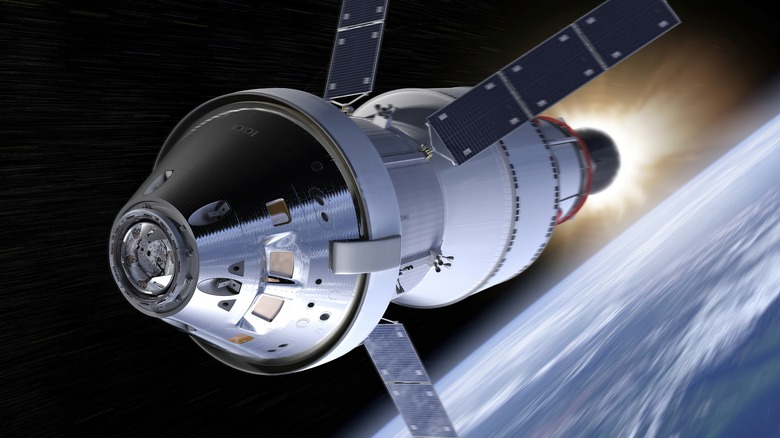Orion Capsule Breaks Record Of Farthest Spacecraft Traveled From Earth
The Orion capsule, which carries with it the Artemis' dreams of bringing mankind back to the moon, has achieved a major space-faring milestone. NASA successfully injected the unmanned vehicle into distant retrograde orbit. In doing so, Orion broke "the record for farthest distance traveled by a spacecraft designed to carry humans to space and safely return them to Earth" (via NASA).
Until now, the legendary Apollo spacecraft held the record for flying the greatest distance from Earth at 248,655 miles (approximately 400,171 km), a milestone it achieved on April 14, 1970. Interestingly, the Orion was not supposed to fly that far from the Earth and shatter the record. As spotted by Collect Space, it only managed to fly that far because NASA placed it in to the distant retrograde orbit.
The space agency decided on the orbital experiment as a means to stress test the Orion's capabilities as scientists prepare to carry out manned missions to the Moon aboard the vehicle in the coming years. Notably, Orion also carries modules mimicking human bones, organs, and tissues that aim to study the effects of radiation exposure on astronauts.
Pushing Orion forward.
"It just so happened that with that really large orbit, high altitude above the moon, we were able to pass the Apollo 13 record," Jim Geffre, Orion vehicle integration manager at NASA, said of the Orion's record-breaking journey. On Monday, Nov. 28, Orion will reach a peak distance of 268,553 miles before the orbital manoeuvring system engine kicks in and propels it toward another close flyby with the Moon in the first week of December. Six days later, the vehicle is expected to return home.
According to NASA, the Orion is "built to take humans farther than they've ever gone before." The Orion capsule has been co-engineered with Lockheed Martin, and it is touted to be the only vehicle capable of manned deep space mission and returning back to Earth at high speed from targets such as the Moon and beyond. With the Artemis project, NASA is actually aiming for the first crewed visit to the Mars, as well.
Capable of carrying four crew members, the capsule employs a total of 355,056 parts and can support missions lasting up to 21 days in its current state (via NASA). The capsule has systems for monitoring and maintaining aspects like humidity, carbon dioxide, oxygen, and radiation shielding, among other vital elements. Interestingly, the Orion's base also features the world's largest ablative heat shield that measures 16.5-feet in diameter and will protect the vehicle when it makes high-speed entry into Earth's atmosphere.

